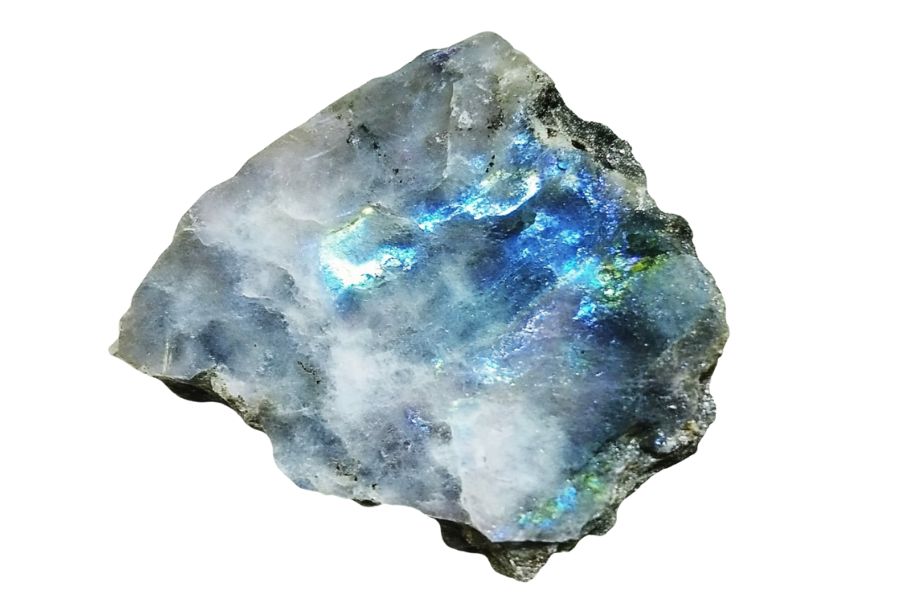I still remember my first labradorite find in Maine. It was tucked away in a pile of ordinary rocks, easy to miss but impossible to forget once spotted. Maine’s rocky terrain has been a hunting ground for rock enthusiasts for decades, and labradorite is one of the most sought-after prizes.
Weekends spent rock hunting in Maine aren’t just about the finds. They’re about muddy boots, packed lunches, and stories swapped with fellow hunters you meet along the way. Some folks drive hours just for the chance to add Maine labradorite to their collection.
This guide pulls together local knowledge that usually takes years to gather. We’ve talked to old-timers who’ve been searching these areas since before GPS was a thing. Their tips, combined with our own experiences, will help you make the most of your Maine rock hunting trips.
How Labradorite Forms Here
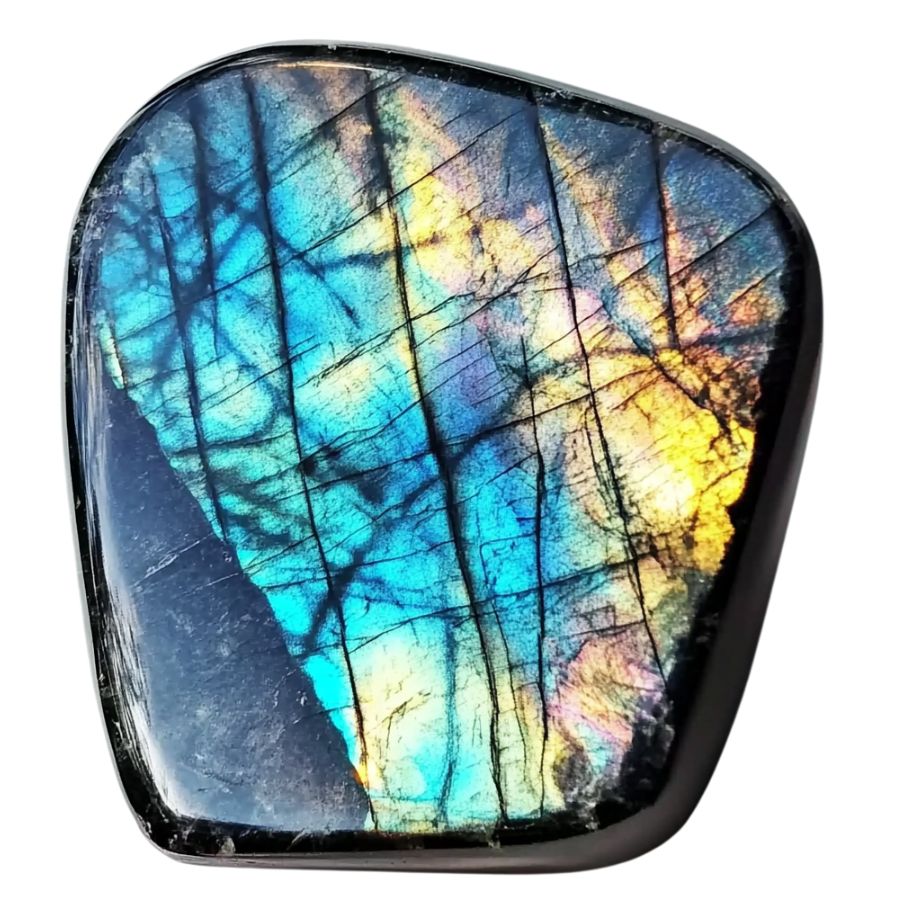
Labradorite forms deep underground when magma slowly cools and crystallizes. The process happens when different minerals separate while cooling, creating thin layers stacked on top of each other. These layers have slightly different chemical makeups, usually about 1 micron thick.
When light hits these layers, it creates that stunning blue-green flash we love, called labradorescence. The stone starts out as a mix of calcium, sodium, aluminum, and silicate minerals.
As it cools, these minerals organize themselves into this layered pattern, which happens most often in places where magma intrudes into the surrounding rock. It’s like nature’s own light show, frozen in stone.
Types of Labradorite
Labradorite comes in several distinct varieties. Each type exhibits special qualities that make it sought after by collectors.
Blue Labradorite
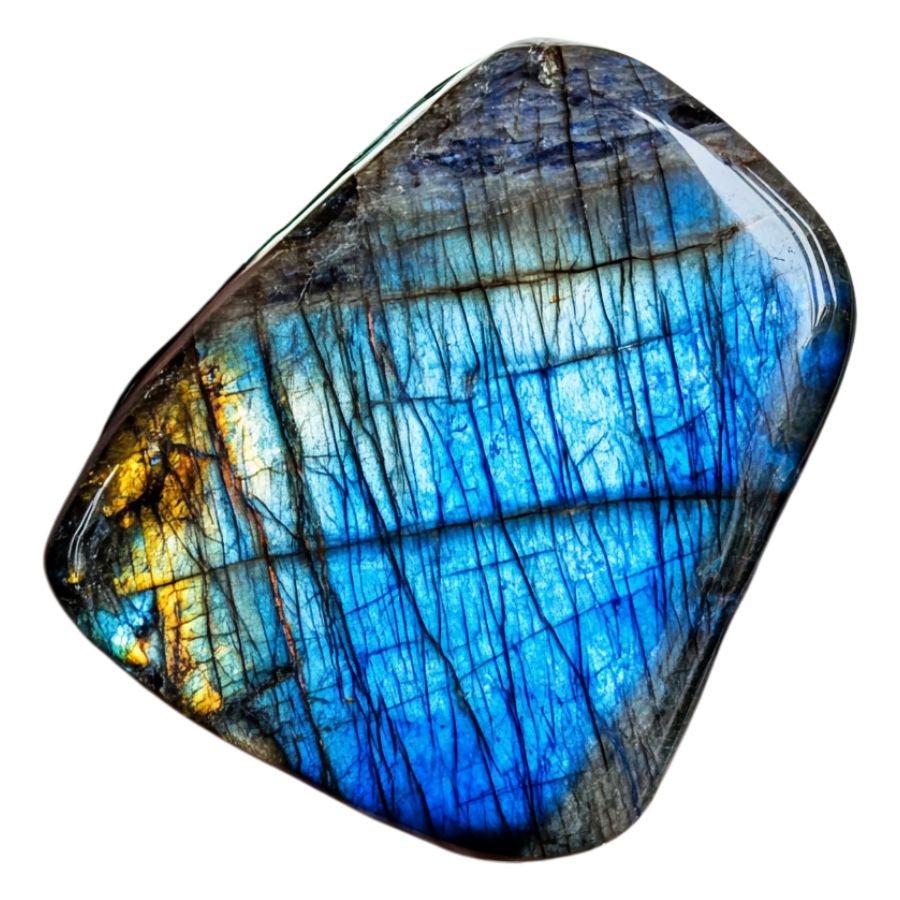
Blue Labradorite stands out for its remarkable blue iridescence against a dark gray or black background. When light hits the stone’s surface, it creates a stunning display of electric blue flashes, sometimes accompanied by hints of green or violet.
The blue flashes appear most vivid when viewing the stone from specific angles, creating an almost magical transformation as you rotate it. This effect is often compared to the ethereal beauty of the Northern Lights.
Exceptional specimens display an intense, electric blue flash that covers a large portion of the stone’s surface. Some pieces also show secondary colors like aqua or sea green, adding depth to their visual appeal. The contrast between the dark base and bright blue flashes makes each piece unique.
Golden Labradorite
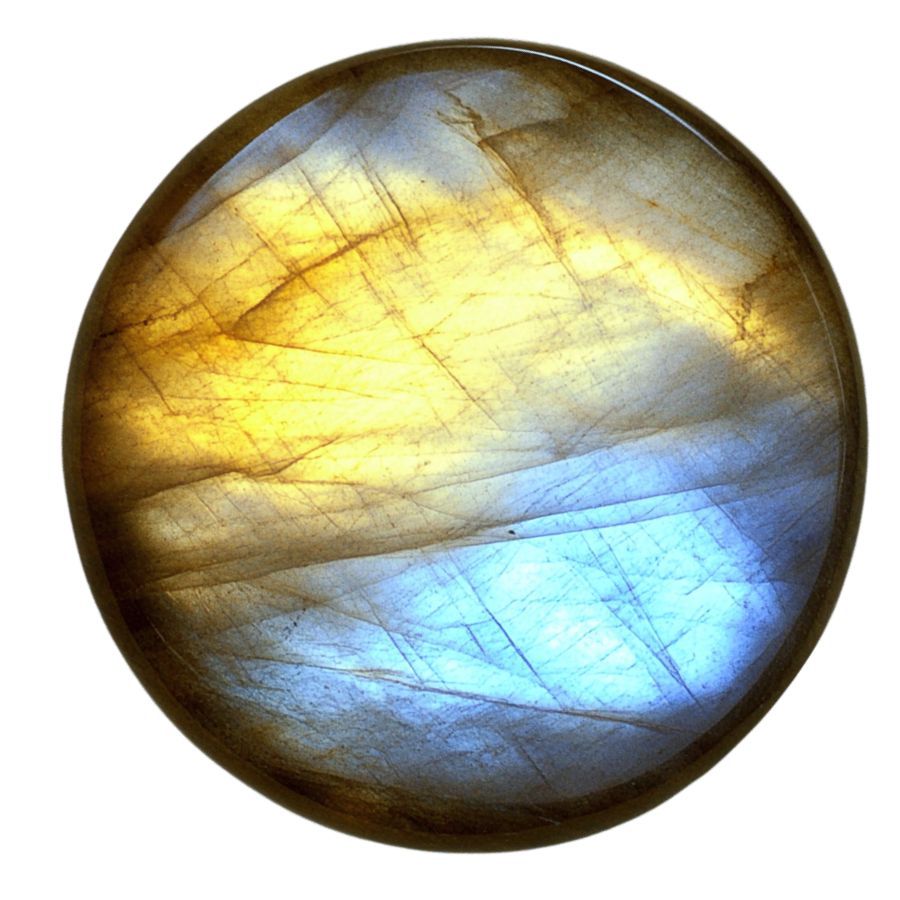
Golden Labradorite displays a mesmerizing golden-yellow sheen that sets it apart from other varieties. The stone’s surface exhibits brilliant flashes of gold and amber, creating a warm, sun-like glow that seems to emanate from within. These golden rays often appear alongside subtle hints of green or champagne colors.
What makes Golden Labradorite special is its ability to display multiple golden hues simultaneously. Some specimens show a range of colors from pale yellow to deep amber, creating a multi-dimensional effect.
The golden flash can vary in intensity and coverage, with premium specimens showing broad, bright areas of gold schiller.
Rainbow Moonstone
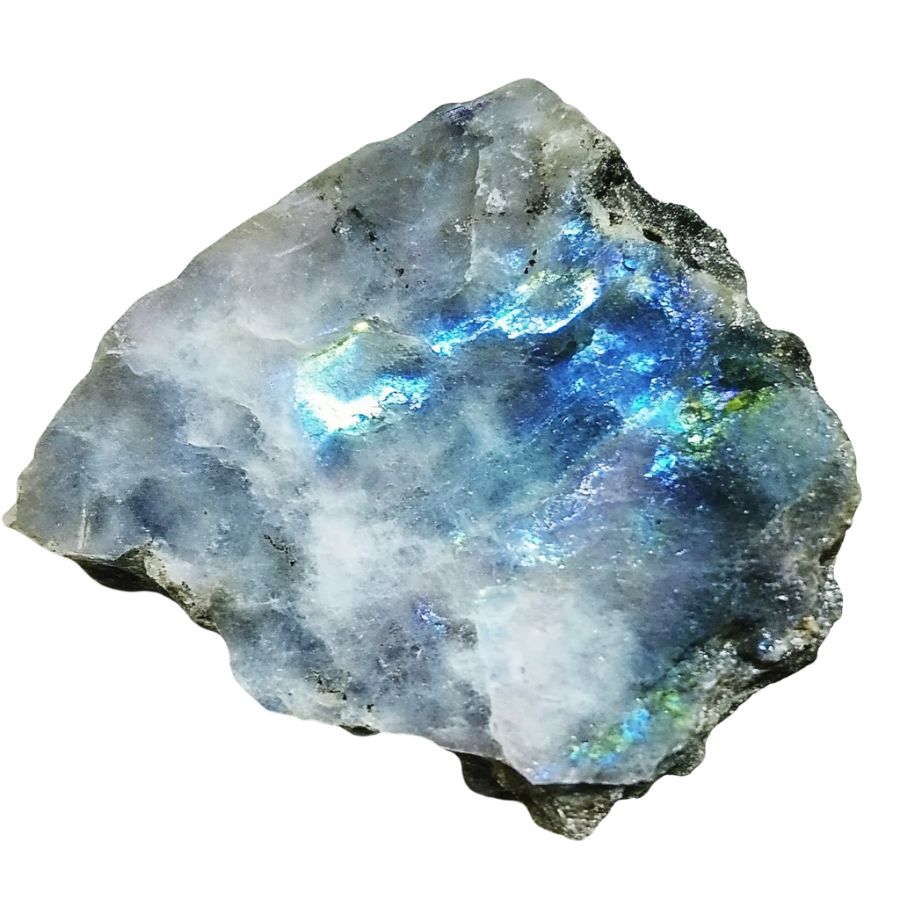
Rainbow Moonstone Labradorite exhibits a distinctive white or colorless base with an enchanting blue sheen that floats across its surface. Blue sheen is often accompanied by flashes of other colors, including pink, yellow, and green.
This stone’s most captivating feature is how its colors appear to float just beneath the surface, creating an almost three-dimensional effect. As light moves across the stone, these colors shift and change, revealing new patterns and combinations. This creates a dynamic display that seems to change with every movement.
The stone’s transparency can range from translucent to semi-transparent, with the most valued pieces showing excellent clarity beneath their shimmering surface.
Spectrolite
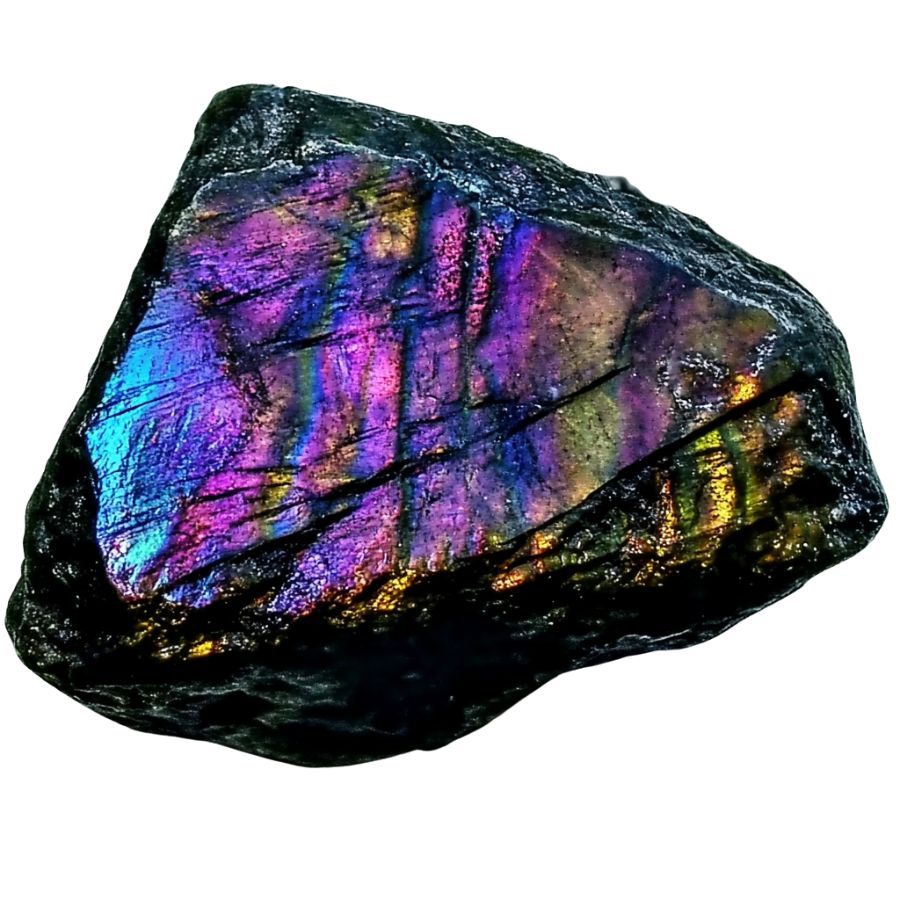
Spectrolite reigns as the most dramatic member of this stone family, with its distinctive jet-black base setting it apart from other varieties.
What makes it truly special is that premium specimens can simultaneously display the complete spectrum of colors, from deep indigo to bright orange, emerald green to royal purple, all in a single piece.
The finest specimens possess what experts call “full-face color,” meaning the vibrant display covers most of the stone’s surface rather than appearing in small patches.
This characteristic, combined with its remarkable color intensity, has earned Spectrolite its reputation as the most visually impressive variety of all similar stones.
Transparent Labradorite
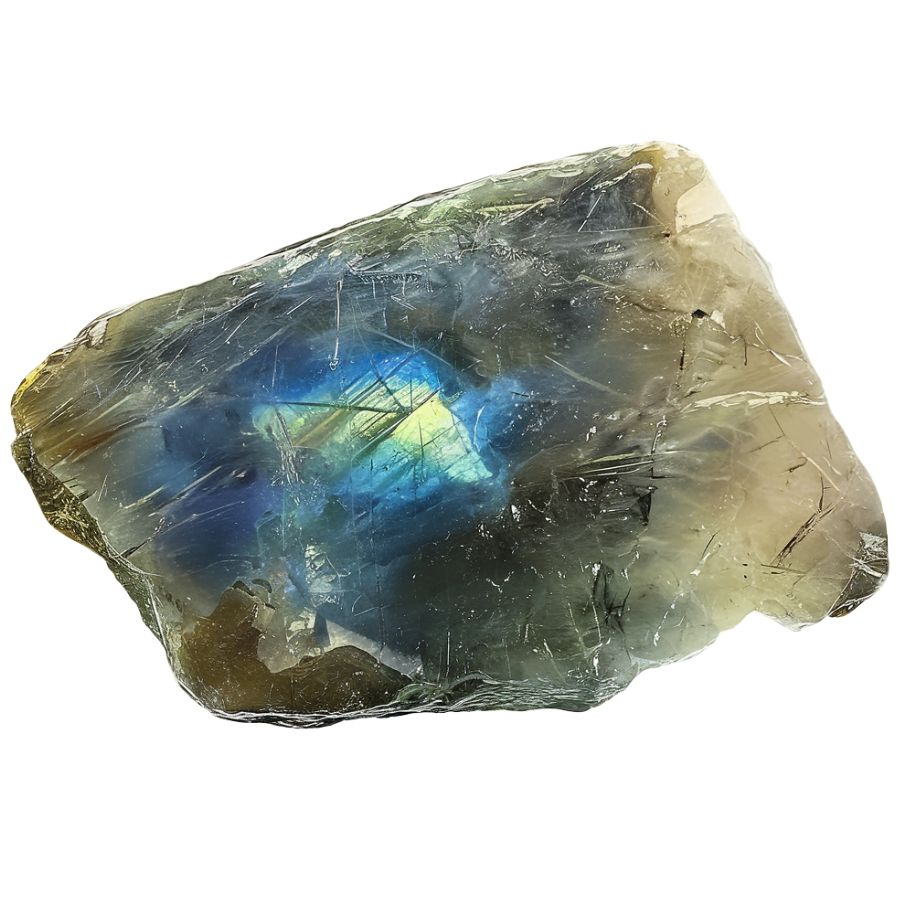
Transparent Labradorite exhibits a remarkable clarity that separates it from its opaque cousins. Crystal-clear areas allow light to pass through, creating an exceptional display of blue flashes against the transparent background.
Natural specimens often show areas of both transparency and translucency. Beautiful color changes occur as you move this stone, with the transparent areas revealing subtle blue sheens that seem to float within the crystal.
Some pieces display additional colors like soft greens or pale yellows, though the blue flash remains dominant.
Remarkable clarity combines with the signature color play to create stones that appear almost liquid-like.
Andesine-Labradorite
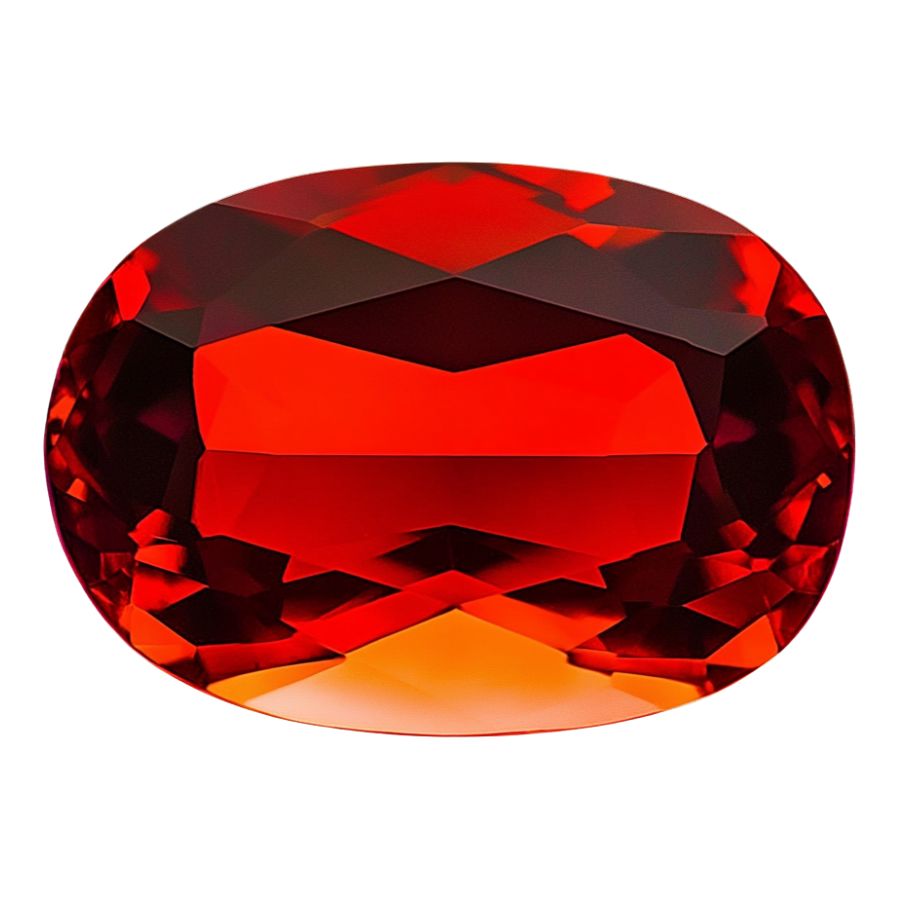
Reddish-orange hues dominate Andesine-Labradorite’s appearance, creating a warm and inviting glow. Delicate green and yellow streaks often appear throughout the stone, adding complexity to its color palette.
Metallic sparkles dance across the surface, different from the typical labradorescent effect. Fresh discoveries of this relatively new gemstone continue to reveal new color combinations.
Striking color variations appear in high-quality pieces, ranging from deep red to bright orange. Many specimens show subtle color zoning, where different hues blend together in distinct patterns.
Black Labradorite
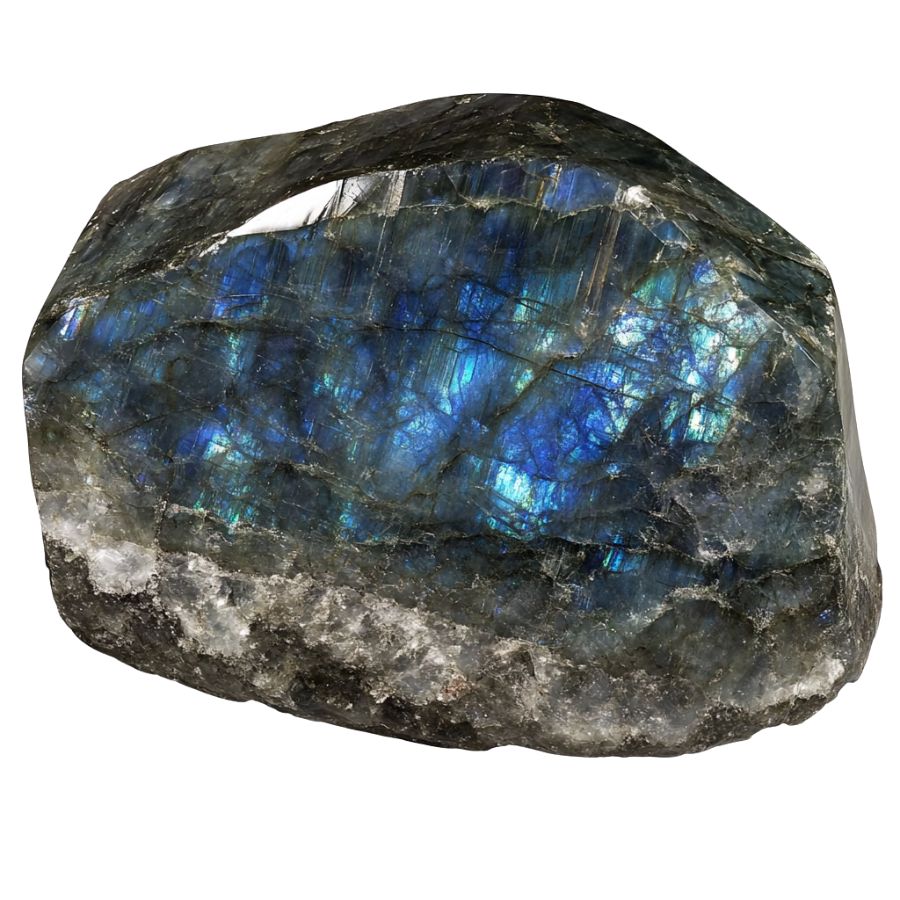
Black Labradorite presents a dramatic dark canvas that emphasizes its colorful display. Bright flashes of color stand out dramatically against the deep black background, creating stunning visual contrast.
Most specimens show multiple colors at once, creating an eye-catching display. These color displays often include electric blues, emerald greens, and golden yellows, all visible simultaneously.
Natural sunlight brings out the boldest displays, while artificial light can highlight subtle color variations. Some specimens also show interesting patterns in how the colors are distributed.
Brown Labradorite

Brown Labradorite features rich earth tones ranging from deep chocolate to warm amber. Peach and orange undertones often appear throughout the stone, creating depth and dimension.
Multiple color zones create interesting patterns within each stone. These patterns can include stripes, swirls, or mottled areas that combine different brown and orange hues.
Subtle iridescence sometimes appears on the surface, adding an unexpected shimmer to the earthy colors. This effect is more subdued than in other varieties but adds an interesting dimension to the stone’s appearance.
If you want REAL results finding incredible rocks and minerals you need one of these 👇👇👇
Finding the coolest rocks in isn’t luck, it's knowing what to look for. Thousands of your fellow rock hunters are already carrying Rock Chasing field guides. Maybe it's time you joined the community.
Lightweight, mud-proof, and packed with clear photos, it’s become the go-to tool for anyone interested discovering what’s hidden under our red dirt and what they've already found.
Join them, and make your next rockhounding trip actually pay off.
What makes it different:
- 📍 Find and identify 140 incredible crystals, rocks, gemstones, minerals, and geodes across the USA
- 🚙 Field-tested across America's rivers, ranchlands, mountains, and roadcuts
- 📘 Heavy duty laminated pages resist dust, sweat, and water
- 🧠 Zero fluff — just clear visuals and straight-to-the-point info
- ⭐ Rated 4.8★ by real collectors who actually use it in the field
What Rough Labradorite Looks Like
Labradorite in its rough form can be tricky to spot, but once you know what to look for, it becomes easier. Here’s how to recognize this fascinating stone in its natural state.
Look for the Signature Flash
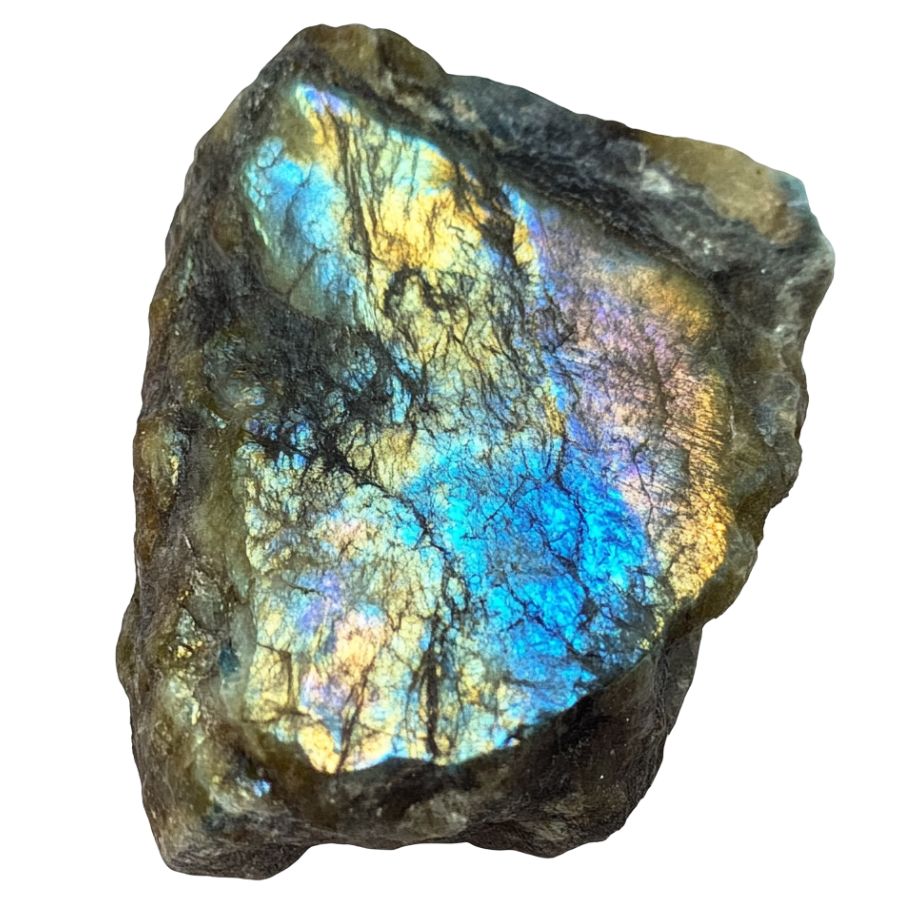
Raw labradorite often shows patches of its famous iridescent flash, even when unpolished. Check dark gray or black areas under direct sunlight – you might catch glimpses of blue, green, or gold shimmer.
Sometimes, you’ll need to wet the surface slightly to see this effect better. The flash isn’t always obvious but usually appears as scattered patches.
Check the Base Color and Texture
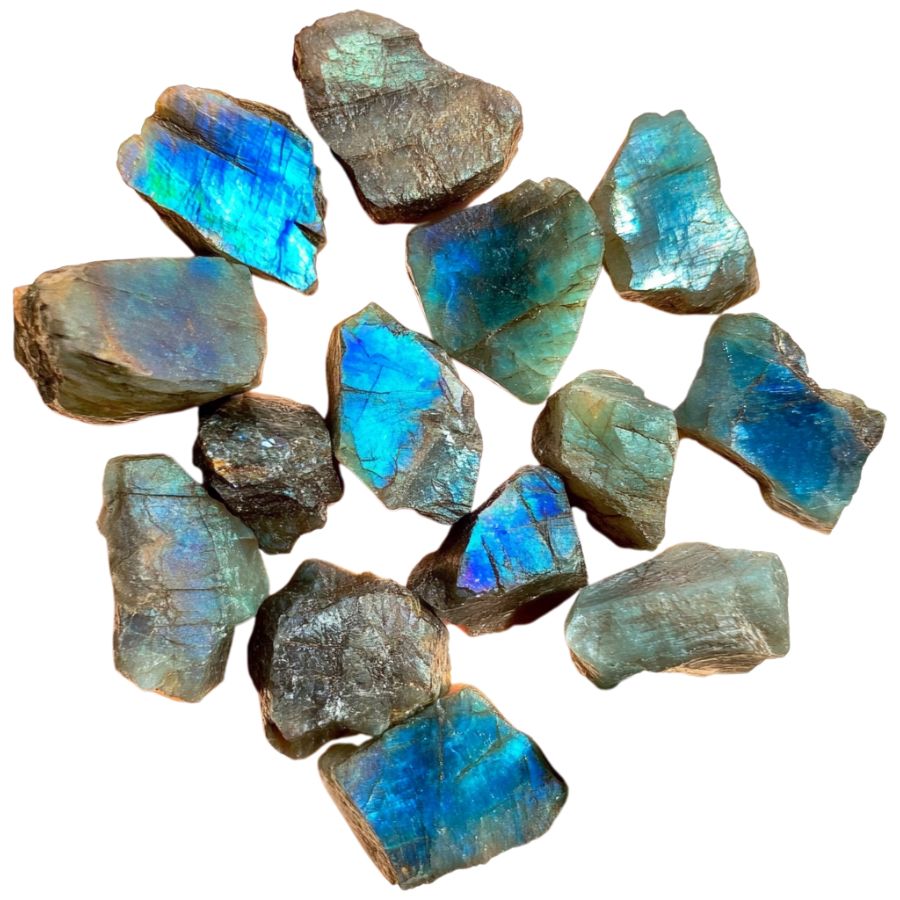
The main body should be dark gray to black, sometimes with a slight greenish tinge. The surface feels smooth but not glossy, similar to unpolished glass.
Look for a slightly bumpy texture with occasional flat surfaces. Fresh breaks will show a more uniform color than weathered surfaces.
Assess the Hardness and Breakage

Try scratching the surface with a copper penny – it shouldn’t leave a mark. The stone often breaks with smooth, flat surfaces at distinct angles.
You’ll notice these angular breaks are pretty characteristic, unlike random rough breaks in common rocks.
Test the Translucency
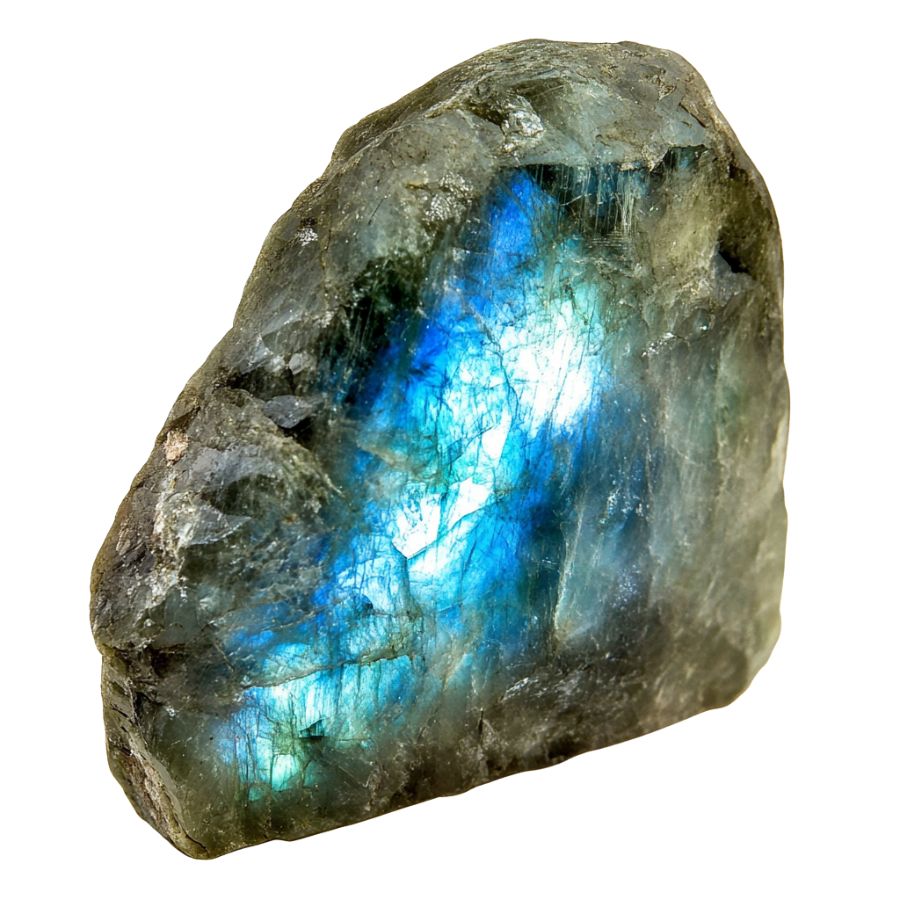
Hold a thin edge up to strong light. Raw labradorite should show some translucency, appearing slightly cloudy rather than completely opaque. The edges might look slightly whitish or gray when light passes through. Thicker pieces will appear darker and more opaque.
A Quick Request About Collecting
Always Confirm Access and Collection Rules!
Before heading out to any of the locations on our list you need to confirm access requirements and collection rules for both public and private locations directly with the location. We haven’t personally verified every location and the access requirements and collection rules often change without notice.
Many of the locations we mention will not allow collecting but are still great places for those who love to find beautiful rocks and minerals in the wild without keeping them. We also can’t guarantee you will find anything in these locations since they are constantly changing.
Always get updated information directly from the source ahead of time to ensure responsible rockhounding. If you want even more current options it’s always a good idea to contact local rock and mineral clubs and groups
Tips on Where to Look
Labradorite isn’t super common in everyday places, but with some smart searching, you can find it. Here’s where you should look:
Metamorphic Rock Formations
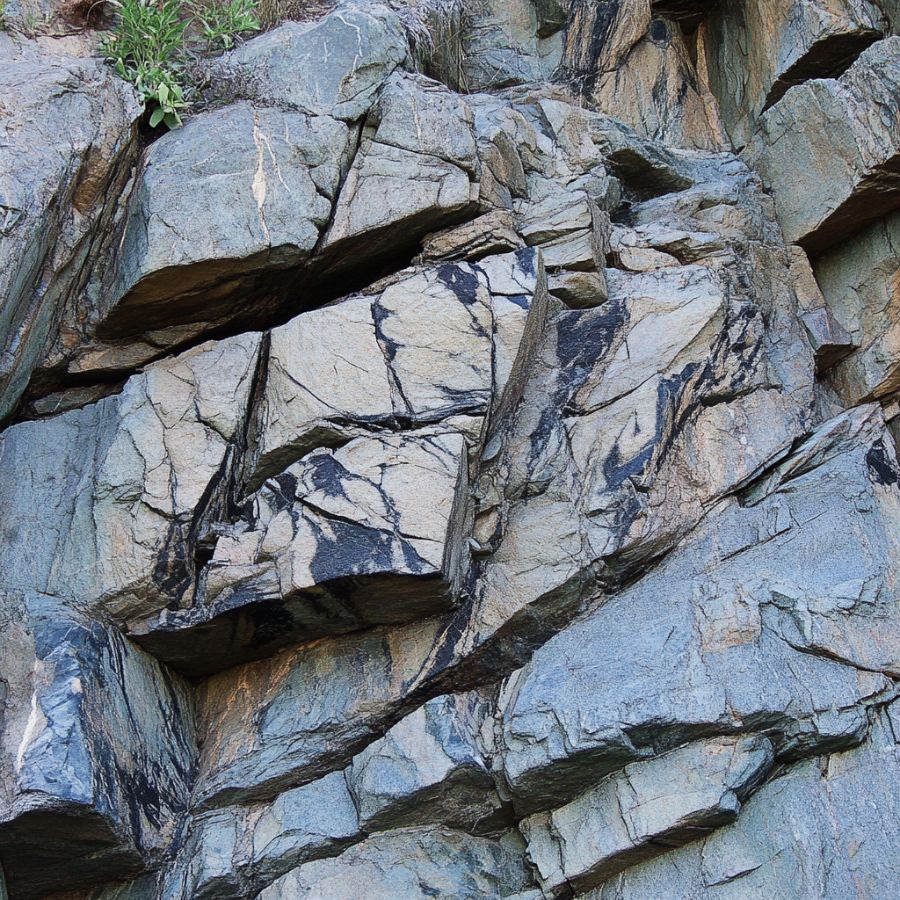
Look for dark-colored rock outcrops. Spot areas with lots of feldspar minerals. Check exposed cliff faces. Sometimes, when the sun hits just right, you might catch that signature blue flash from larger formations that’s a dead giveaway for labradorite presence.
Glacial Deposits
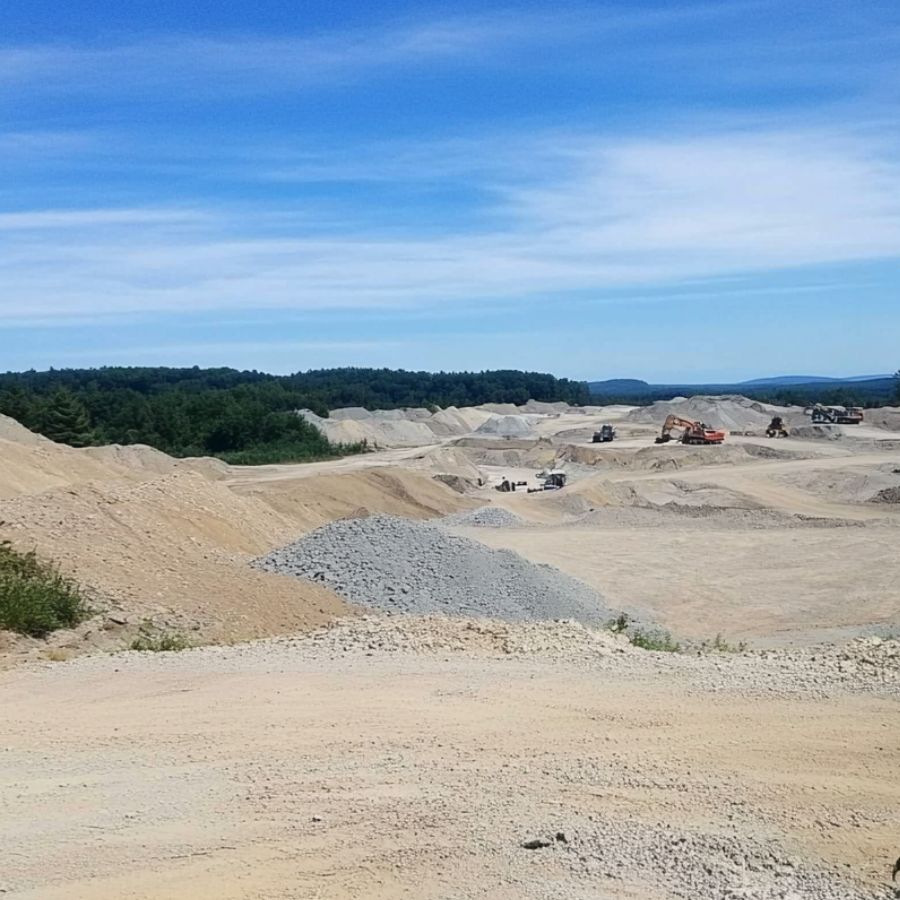
Search river beds after glacial deposits. Check gravel pits near old glacial paths. Look for smooth, dark gray stones mixed with other rocks. These deposits often contain chunks of labradorite that have broken off from larger formations and been carried downstream over thousands of years.
Mining Tailings
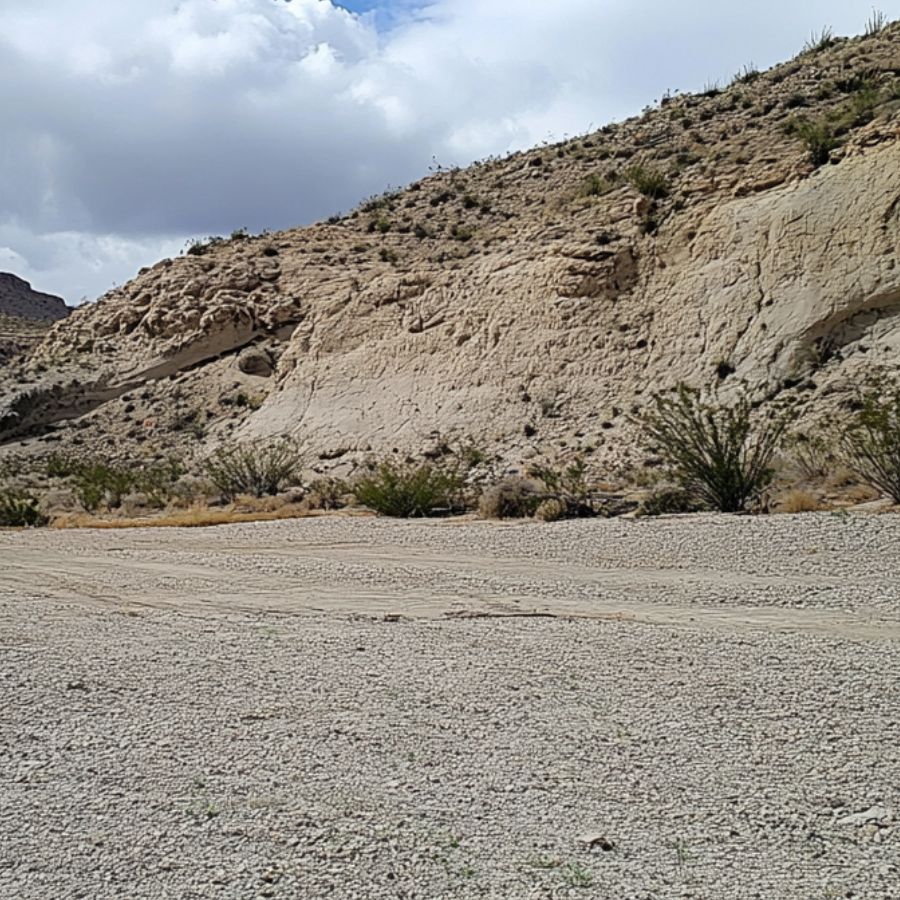
Visit abandoned feldspar mines. Check mine dump areas. Dig through tailings piles. Look for flat, shiny surfaces. The waste rock from old mining operations often contains overlooked pieces of labradorite that weren’t considered valuable during active mining periods but are perfect for collectors.
Stream Beds
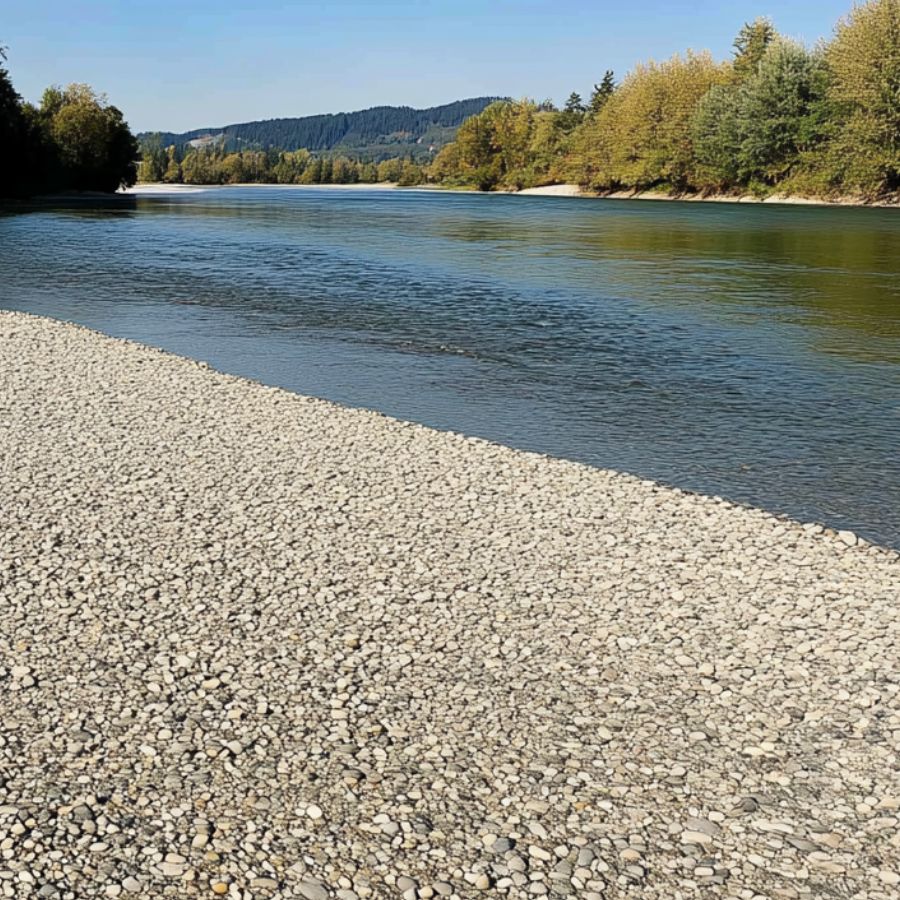
Search clear-water streams. Look under water-worn rocks. Check gravel bars after rain. Spot dark, plate-like stones. The constant water movement often exposes and polishes these stones, making them easier to identify when wet.
Some Great Places To Start
Here are some of the better places in the state to start looking for Labradorite:
Always Confirm Access and Collection Rules!
Before heading out to any of the locations on our list you need to confirm access requirements and collection rules for both public and private locations directly with the location. We haven’t personally verified every location and the access requirements and collection rules often change without notice.
Many of the locations we mention will not allow collecting but are still great places for those who love to find beautiful rocks and minerals in the wild without keeping them. We also can’t guarantee you will find anything in these locations since they are constantly changing.
Always get updated information directly from the source ahead of time to ensure responsible rockhounding. If you want even more current options it’s always a good idea to contact local rock and mineral clubs and groups
Lewiston Area

Lewiston is a city along the Androscoggin River with a rich industrial past. Its diverse rock formations make it special for gem hunters. The city sits on metamorphosed sedimentary rocks that were pushed up by large igneous bodies over time. This mix creates perfect conditions for finding minerals like labradorite.
The City Quarry in Lewiston is the main spot where labradorite specimens have been found. This quarry is in the southern part of the city and features an unusual granite pegmatite dike cutting through calc-silicate deposits.
Mount David, a small hill near Bates College, is another interesting spot. This exposed pegmatite intrusion shows the area’s past volcanic activity and might yield labradorite specimens for careful searchers.
Besides labradorite, rockhounds visiting Lewiston might also discover zoisite in the same areas, making it worth exploring for anyone interested in Maine’s mineral treasures.
Harvard Quarry
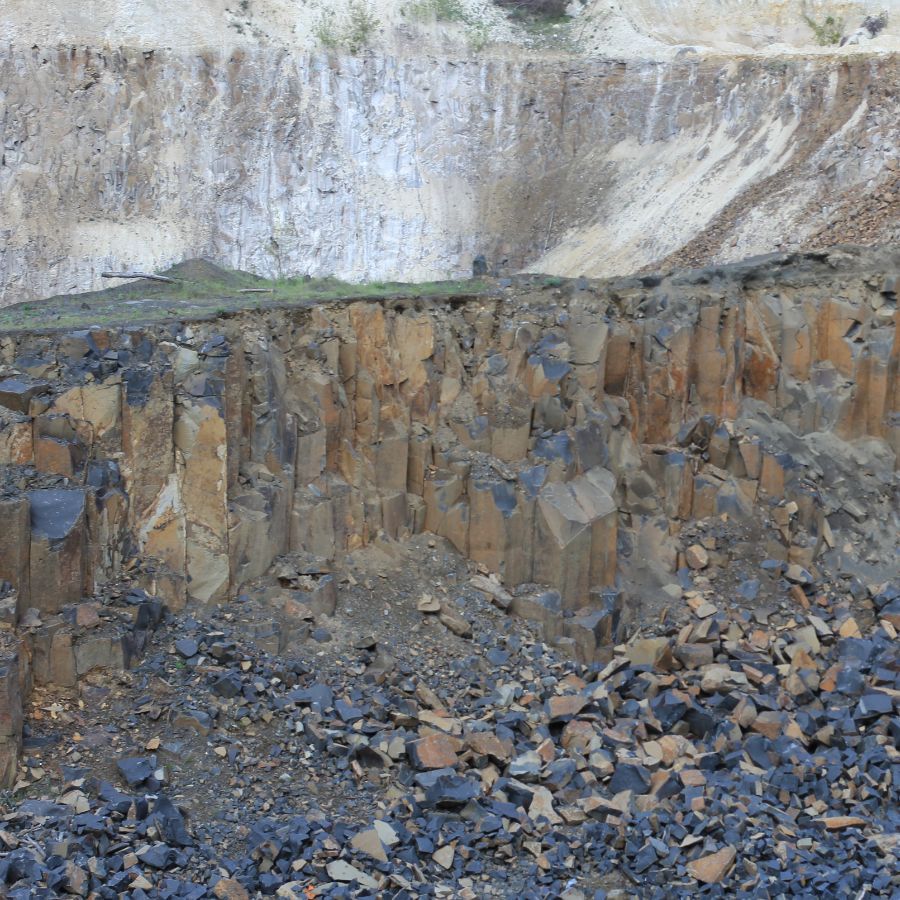
Harvard Quarry sits on Noyes Mountain in Oxford County. This famous quarry has attracted mineral collectors since the late 19th century. Part of the Oxford pegmatite field, the quarry is known for its large crystal formations and wide variety of minerals.
Labradorite can be found in specific areas of Harvard Quarry where pegmatite veins cross with feldspar-rich zones. The best spot to look is in the upper ledges above the main quarry pit.
A designated trail leads to the quarry with parking available at the trailhead. The moderate hike rewards visitors with both scenic views and mineral hunting opportunities.
The quarry is also famous for other minerals, including black tourmaline (schorl), fluorapatite, and quartz. These often appear as striking specimens embedded in white rock matrices, creating a treasure hunt atmosphere for visitors searching the rubble piles and exposed walls.
Appleton Area
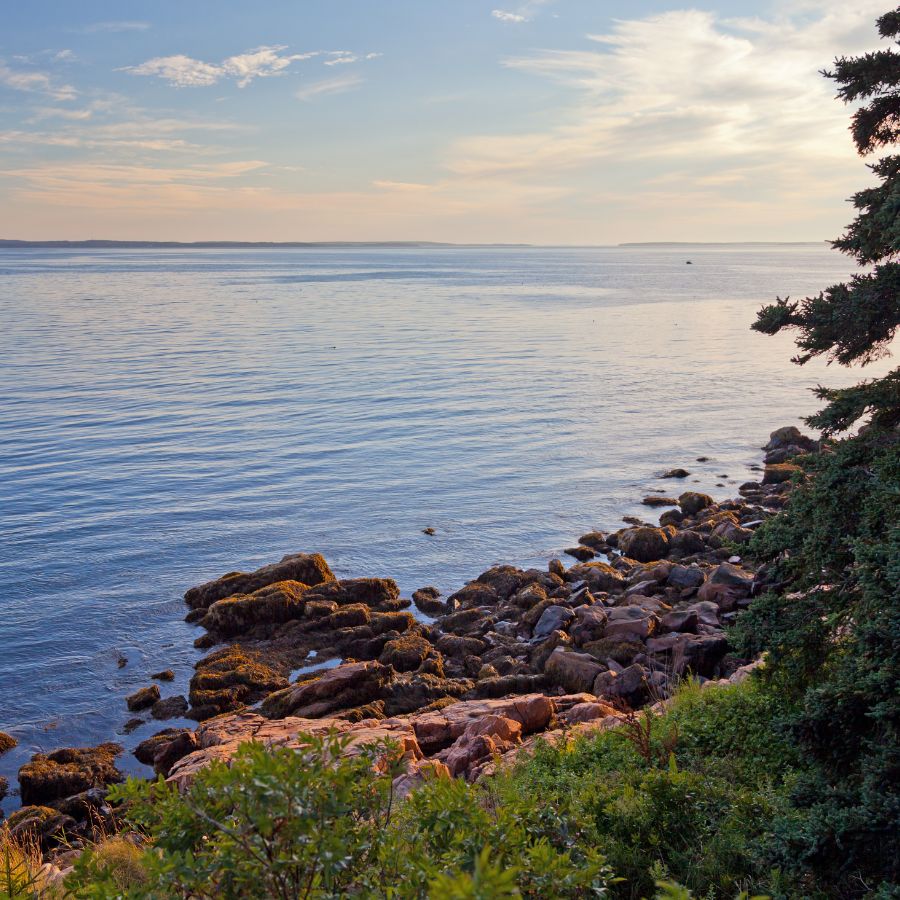
Appleton is a small town in northern Knox County, established in 1829. The landscape features rolling hills, thick forests, and the notable Appleton Ridge. This peaceful rural setting hides geological treasures beneath its surface.
The town sits on the Appleton Ridge Formation, a set of metamorphic rocks formed during the Silurian period. This formation underwent major changes during the Acadian mountain-building event millions of years ago, creating perfect conditions for various minerals to form.
Route 105 road cut provides the best access point for finding labradorite in Appleton. This exposed rock face allows collectors to observe and gather labradorite specimens right where they naturally occur. The road cut slices through the ancient rock layers, revealing minerals that would otherwise remain hidden underground.
Kennebunk Area
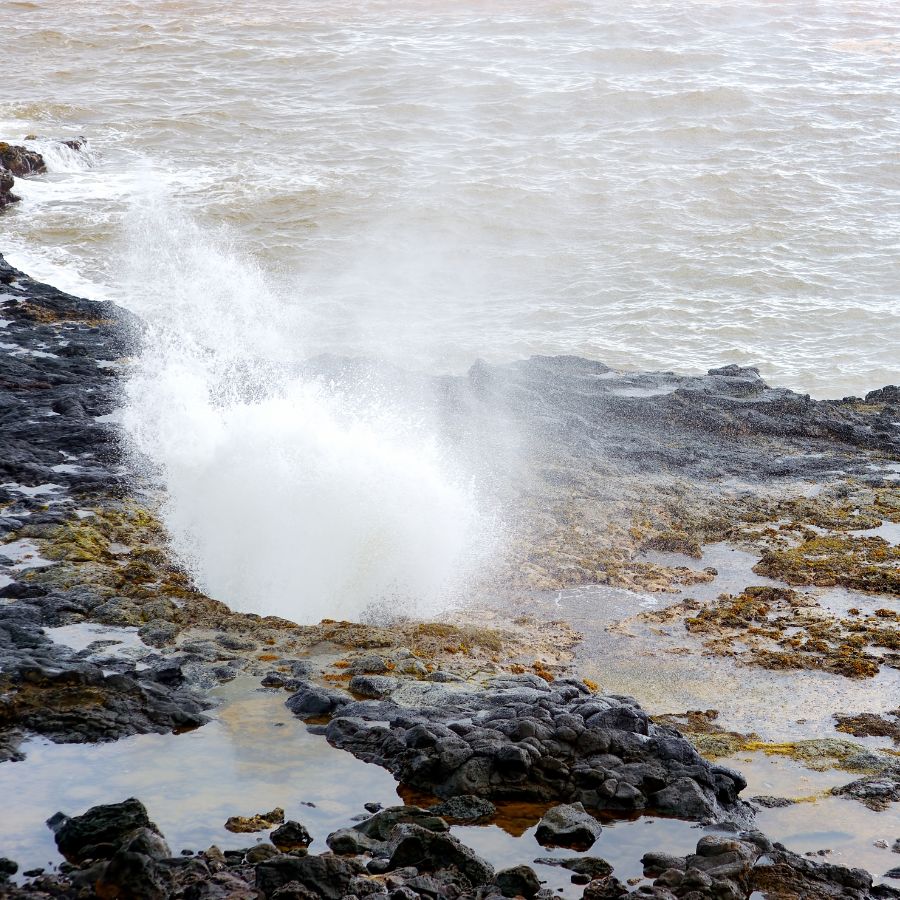
Kennebunk lies along Maine’s southern coast, famous for its beautiful beaches and historic downtown. The town’s landscape was shaped by glaciers that retreated about 23,000 years ago, leaving behind unique features that make it a special place for mineral hunters.
Spouting Rock in nearby Kennebunkport is the main site where labradorite has been found. This coastal formation provides a rare opportunity to collect this flashy mineral against the backdrop of crashing waves. The rock gets its name from the water that shoots upward when waves hit it at high tide.
Rocky outcrops along Kennebunk’s coastline also yield labradorite specimens, especially during low tide when more of the shore is exposed. The best collecting happens after storms have washed away sand and revealed fresh rock surfaces.
The town’s bedrock contains a mix of igneous and metamorphic rocks that contribute to its varied mineral deposits. This geological diversity, combined with coastal erosion that constantly exposes new material, makes Kennebunk an ever-changing treasure hunt for labradorite seekers.
Union Area
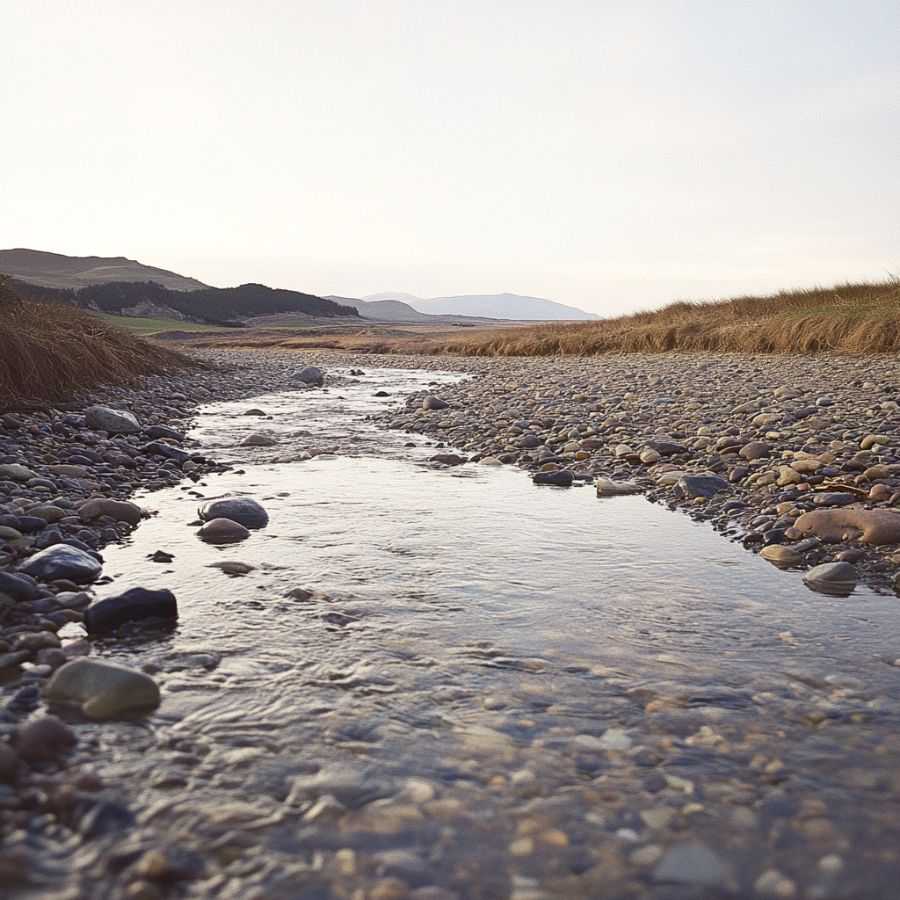
Union is a charming town in Knox County with a landscape of gentle hills, clear lakes, and rich farmland. Founded in 1786, the town has deep roots in agriculture and early New England industry. Its varied terrain offers surprising opportunities for mineral collectors.
The Harriman Prospect stands out as Union’s primary labradorite location. The area features exposed rock outcrops where careful searching can reveal these hidden gems.
Local collectors recommend searching after heavy rains when minerals are washed clean and their colors show more vividly. Spring is particularly good for labradorite hunting in Union, as melting snow and rain create ideal conditions.
Visitors to Union can combine their mineral hunting with exploring the town’s other attractions, including Crawford Lake and the Union Fair, making it a well-rounded destination for rockhounds.
Places Labradorite has been found by County
After discussing our top picks, we wanted to discuss the other places on our list. Below is a list of the additional locations along with a breakdown of each place by county.
| County | Location |
| Oxford | Deer Hill Mineral Collecting Area |
| Oxford | Tamminen Quarry |
| Oxford | Waisanen Quarry |
| Oxford | Mount Mica |
| Oxford | Bumpus Quarry |
| Oxford | Emmons Quarry |
| Oxford | Lord Hill Quarry |
| Oxford | Hayes Ledge Quarry |
| Oxford | Cobb Hill Quarry |
| Oxford | Perham Quarry |
| Oxford | Berry Quarry |
| Oxford | Pine Hill Quarry |
| York | Mount Agamenticus |
| York | Cape Neddick River Locality |

